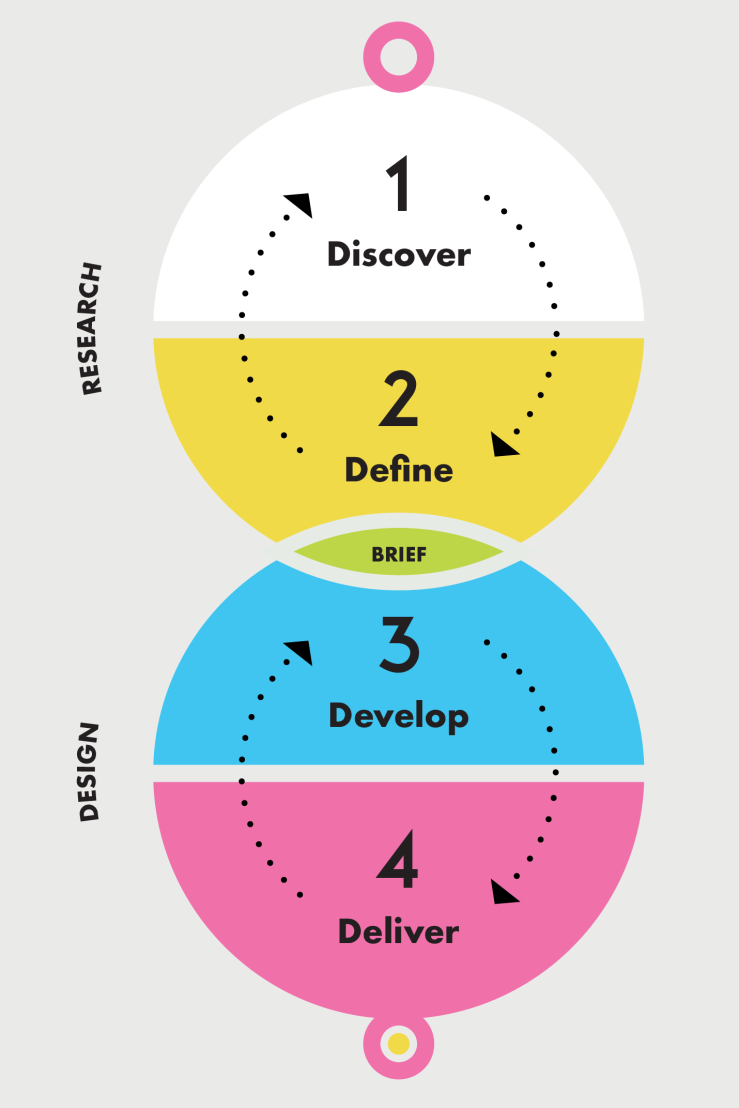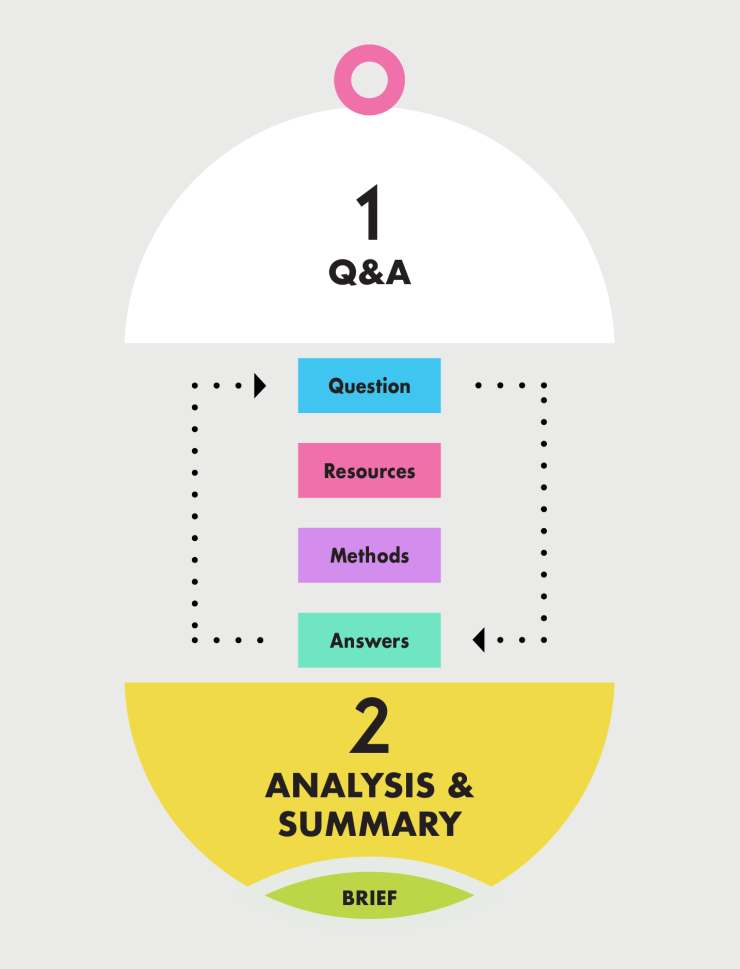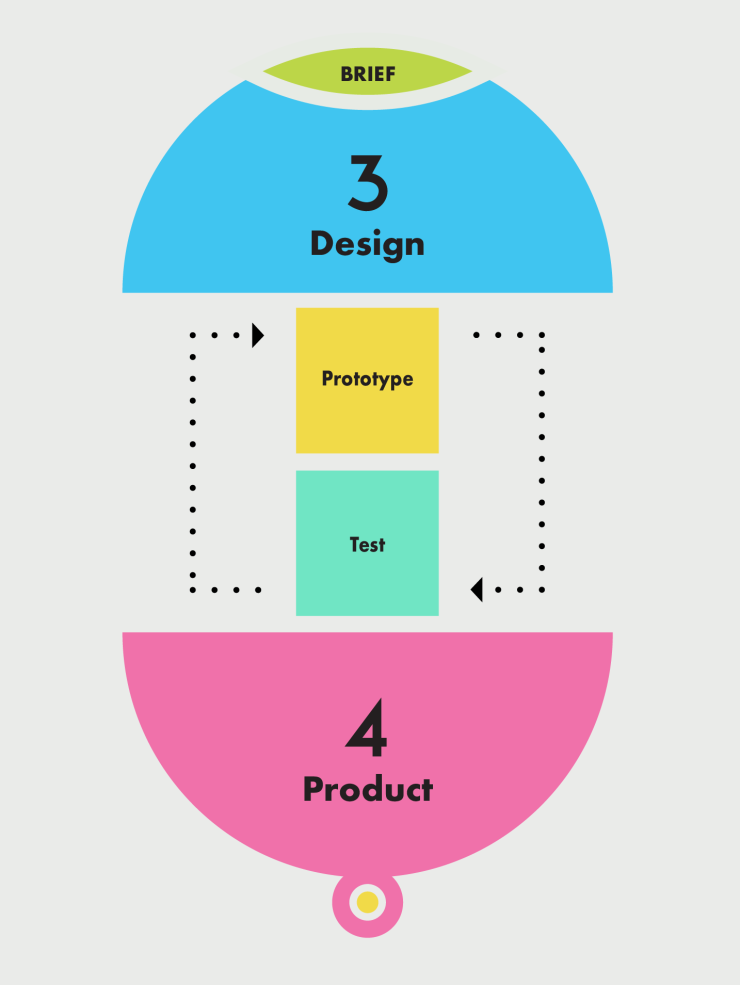A designer’s research manual by Visocky O´Grady, Jenn Grady, Ken Grady has been a game-changing book for me. This book will teach you everything you need to know about researching for design purposes. I enjoyed it very much and did my own little summary to remember what was most important to me. I mixed some techniques, saying I made a new research process would be too naive so I won’t do that. However, I did summarize the contents in a way that makes sense to me and made a research process that works for me. If it works for you too then yay and high-five. I made some graphics to illustrate this process, of course, inspired/based on the illustrations from the book.
I highly recommend you add this book to your bookshelf!
Research Driven Process

Research Planning
Help organize thoughts, guide the team, and help bring the clients on board.
1. Discover
This initial step focuses on posing a question, analyzing a problem, or identifying a potential opportunity.
- Select Research Methods, Using the KWHL Tables (Pg. 117) help develop the research plan. Identify the holes in the understanding of the project and force the team to develop strategies and choose research methods to find the missing information.
- Conduct Research, Go out there and use all agreed upon research methods to get the information.
2. Define
This phase aligns ideas generated in the Discover stage with overall business objectives, potential return on investment, and feasibility. It concludes with a clearly articulated project brief, outlining goals, deliverables, scope, schedule, and budget. This ensures that client and designer have a mutual understanding of project purpose, and the creative team understands individual roles and responsibilities.
- Research Analysis, Analysis frameworks provide structure for research findings or documentation of a user’s experience.
- Research Summary Report, Presents investigative findings and analysis before making the pitch on how to solve the problem.
- Creative brief, Takes the research summary report and makes it actionable for the design team.
3. Develop
Design concepts transition into working prototypes, tested with users, ensuring they meet the objectives outlined in the previous stage.
- Iterative Process, Using a sequence of prototyping and testing an iterative process allows designers to collect audience feedback, informing their design direction. (Pg. 106.)
4. Deliver
Final products, messaging, or designs are delivered to the audience. A summative evaluation may occur in this phase, confirming alignment with project goals or identifying areas of further development.
RESEARCH PHASE

1. Questions and Answers
- Questions, What do I need to Know? Objectives: define why you are conducting the research. What are you trying to learn?
- Resources, What do I need to find out? Inputs: take stock of resources, list anyone or anything you need to execute the activity.
- Methods, How will I find the information I need? Actions: Outline what you are going to do. Be as specific as possible. Outputs: What will be generated? How will that inform project development?
- Answers, What Have I learned? Outcomes: Record the results of an activity. Include projected outcomes and actual outcomes. Comparing them confirms or contradicts assumptions.
(For more insight check KWHL Table & Logic Model Combined, Pg 117 & 119)
2. Analysis and Summary
- Research Analysis, Analysis frameworks provide structure for research findings or documentation of a user’s experience.
- Research Summary Report presents investigative findings and analysis before making the pitch on how to solve the problem.
- Creative brief takes the research summary report and makes it actionable for the design team.
Design Phase

3. Design
Develop Design concepts transition into working prototypes, tested with users, ensuring they meet the objectives outlined in the previous stage.
- Iterative Process, Using a sequence of prototyping and testing an iterative process allows designers to collect audience feedback, informing their design direction. (Pg. 106.)
4. Product
Final products, messaging, or designs are delivered to the audience. A summative evaluation may occur in this phase, confirming alignment with project goals or identifying areas of further development.
I find myself graving the book to check or confirm something all the time, so a summary is not enough. What are you waiting? Add it to your wishlist right now. If you enjoyed this summary please let me know. If you want to keep in touch with me you can do so on my social media. I understand English, Spanish and little of French and Japanese.


